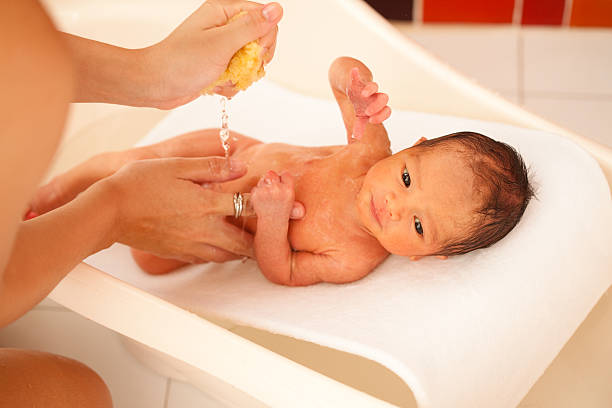Welcoming a newborn into the family is a momentous occasion, but it also marks the beginning of numerous new experiences and responsibilities for parents. Among these, bathing the delicate newborn can be both a joyful bonding moment and an anxiety-inducing task. Understanding the right techniques and practices can turn this routine into a cherished ritual, ensuring both the baby's hygiene and the parent's confidence.
The Importance of Gentle Care: Newborn skin is incredibly delicate and sensitive. Hence, it's crucial to approach bathing with utmost care and gentleness. This section emphasizes the significance of using mild, fragrance-free products and soft materials for the baby's comfort and safety.

Starting with Sponge Baths: Explaining why sponge baths are recommended initially helps reassure parents who may be apprehensive about handling their newborn in water. Highlighting the steps involved in sponge bathing, such as preparing the essentials and creating a comfortable setup, instills confidence in caregivers.

- Transitioning to Traditional Baths: Once the umbilical cord stump heals, parents can transition to traditional baths. Detailing the process step-by-step, from preparing the bath area to easing the baby into the water, ensures that parents feel equipped to handle this milestone with ease and confidence.

Expert Tips for Safe Bathing: Dermatologists offer invaluable advice for safe and effective newborn bathing. This section includes tips on maintaining proper water temperature, cleaning delicate areas, and ensuring thorough rinsing to prevent skin irritation.

Post-Bath Care and Hygiene: The article provides guidance on wrapping the baby in a warm towel post-bath, checking for signs of dry skin, and moisturizing if necessary. Addressing common concerns about baby skincare reinforces the importance of post-bath care in maintaining the baby's comfort and well-being.

